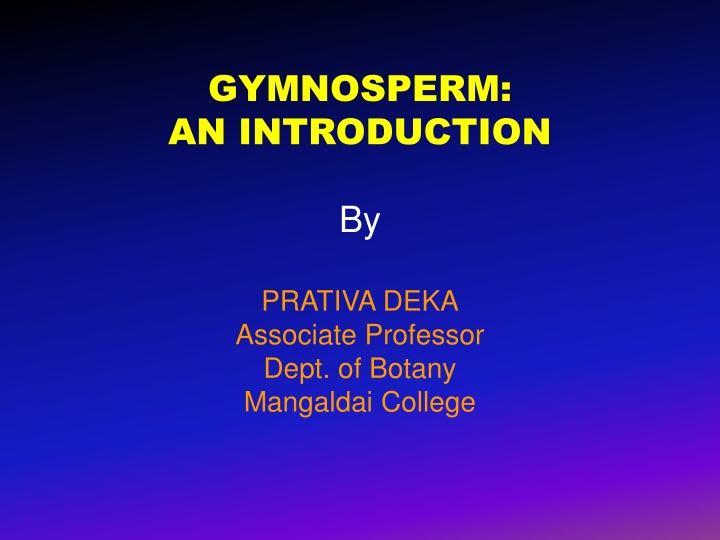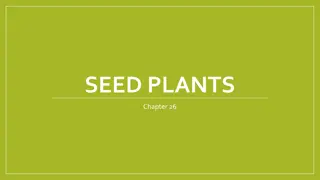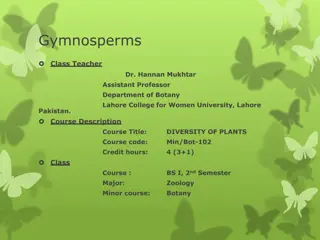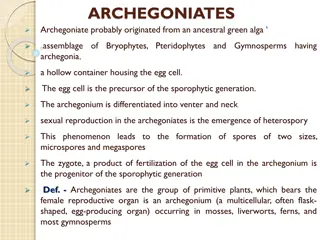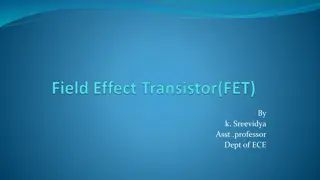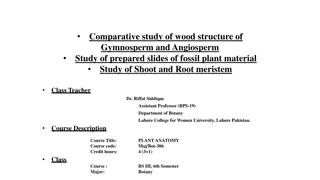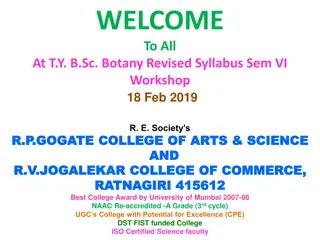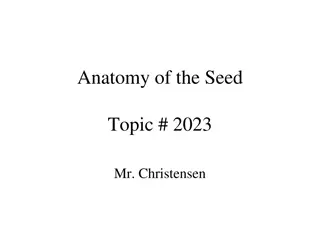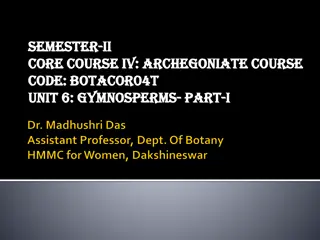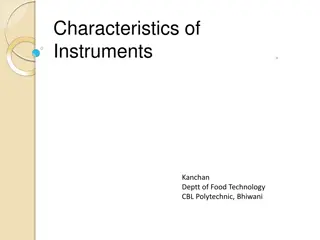Introduction to Gymnosperms: Key Characteristics and Features
Gymnosperms are seed-producing plants with exposed ovules, lacking fruits. They have true roots, stems, and leaves, with majority being tall, woody, perennial plants. Male and female flowers are borne on separate structures, and pollination occurs via wind. Gymnosperms exhibit unique features such as polyembryony, haploid endosperm tissue, and absence of double fertilization. They produce true seeds that are not enclosed within fruits. Overall, gymnosperms are an interesting group with distinct reproductive and morphological characteristics.
Download Presentation

Please find below an Image/Link to download the presentation.
The content on the website is provided AS IS for your information and personal use only. It may not be sold, licensed, or shared on other websites without obtaining consent from the author.If you encounter any issues during the download, it is possible that the publisher has removed the file from their server.
You are allowed to download the files provided on this website for personal or commercial use, subject to the condition that they are used lawfully. All files are the property of their respective owners.
The content on the website is provided AS IS for your information and personal use only. It may not be sold, licensed, or shared on other websites without obtaining consent from the author.
E N D
Presentation Transcript
GYMNOSPERM: AN INTRODUCTION By PRATIVA DEKA Associate Professor Dept. of Botany Mangaldai College
GYMNOSPERM : INTRODUCTION Gymnosperms are a group of plants which produced seeds that are not enclosed within the fruit. The term gymnosperm derived from two Greek words gymnos means naked and sperma means seed. The word gymnosperm was first used by Theophrastus in 300 B.C. in his book Enquiry into Pants . The seed plants Spermatophyta or Phanerogams are grouped into two major groups on the basis of protection afforded to the ovule before and after fertilization, viz. Gymnosperms and Angiosperms. The ovules of gymnosperms freely exposed before and after fertilization. They are not enclosed by ovary, hench fruits are absent in gymnosperms.
CHARACTERISTICS OF GYMNOSPERMS Plants are sporophytic. True roots. stems and leaves are present. Majority are tall woody, perennial and evergreen plants, rarely shrubs. Plants are heterosporous. Microspore produces male gametophytes and megaspore produces female gametophytes. Vascular bundles in stem are conjoint, collateral and open. Vessels are absent except order Gnetales. Companion cells are altogether absent. Secondary growth present. Leaves are of two types (dimorphic). Brown scale leaves and green foliage leaves. Flowers are unisexual, simple, reduced naked ie. Without perianth. (true flowers absent)
CHARACTERISTICS OF GYMNOSPERMS Male flowers are known as microspophylls and female flowers known as megasporophylls. Generally micro and megasporophylls are aggregated into cones or strobilli. Megasporangia i.e. ovules are directly borne on the megasporophylls, so that ovules remains uncovered i.e. not enclosed within the ovary. Ovule is generally orthotropous, unitegmic with three layers. Pollination takes place by wind (anemophily). At the time of pollination pollen grains are directly carried by wind to the micropyle of the ovule. Gametophytes are much smaller, reduced but more conspicuous than angiosperms.
CHARACTERISTICS OF GYMNOSPERMS Male gametophyte consists of one or two prothallial cells, a tube nucleus, a stalk cell (except Gnetum) and two male gametes. Female gametophyte is multicellular structure bearing one or more archegonia (except Gnetum). Endosperm formation takes place before fertilization, so endosperm tissue is haploid. Fertilization occurs by pollen tube (siphonogamy). Double fertilization is absent. Polyembryony is the usual feature. Number of cotyledons varies from one to many. True seeds are always present. Seeds are borne naked i.e. not enclosed within the fruits.
